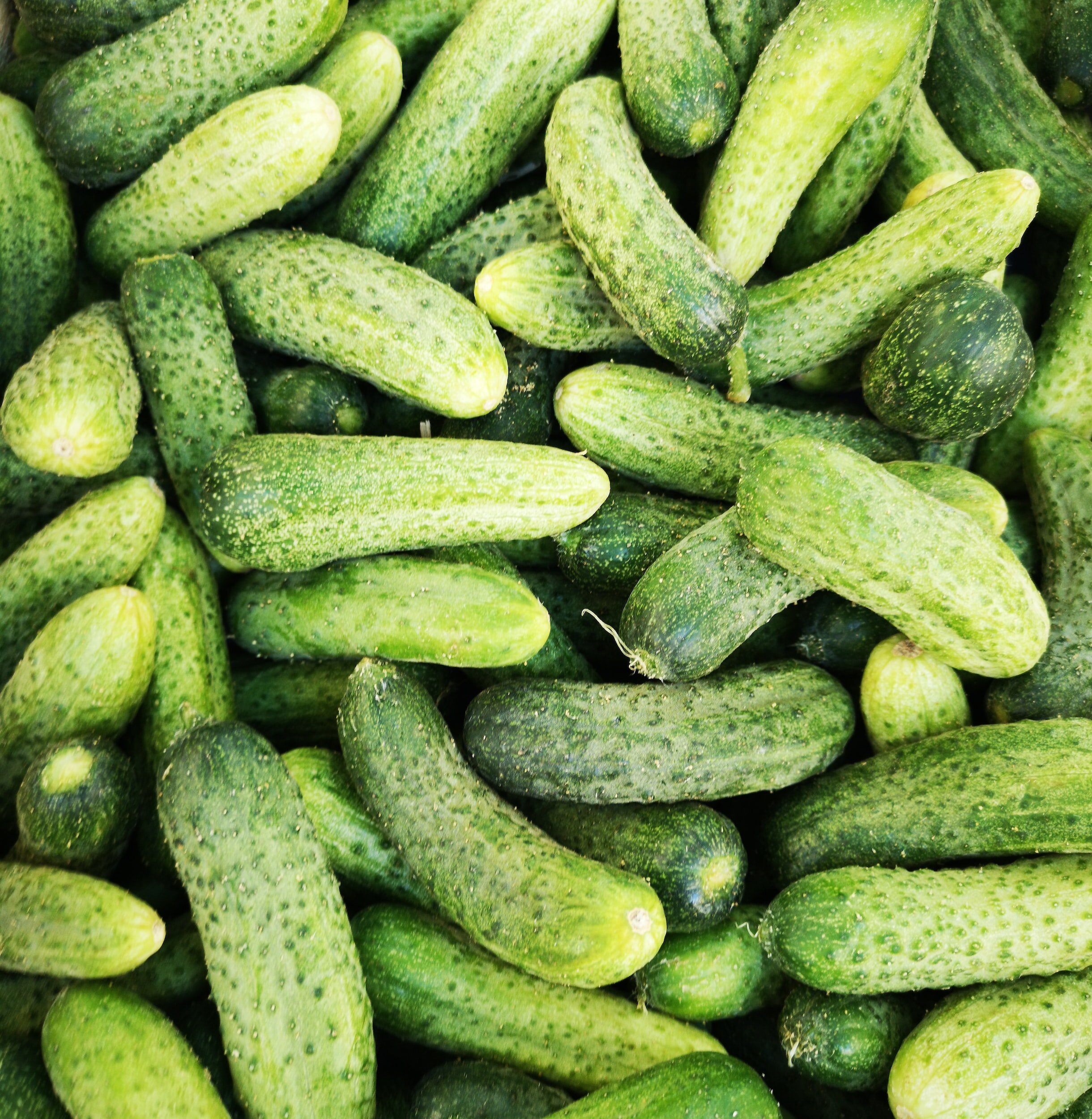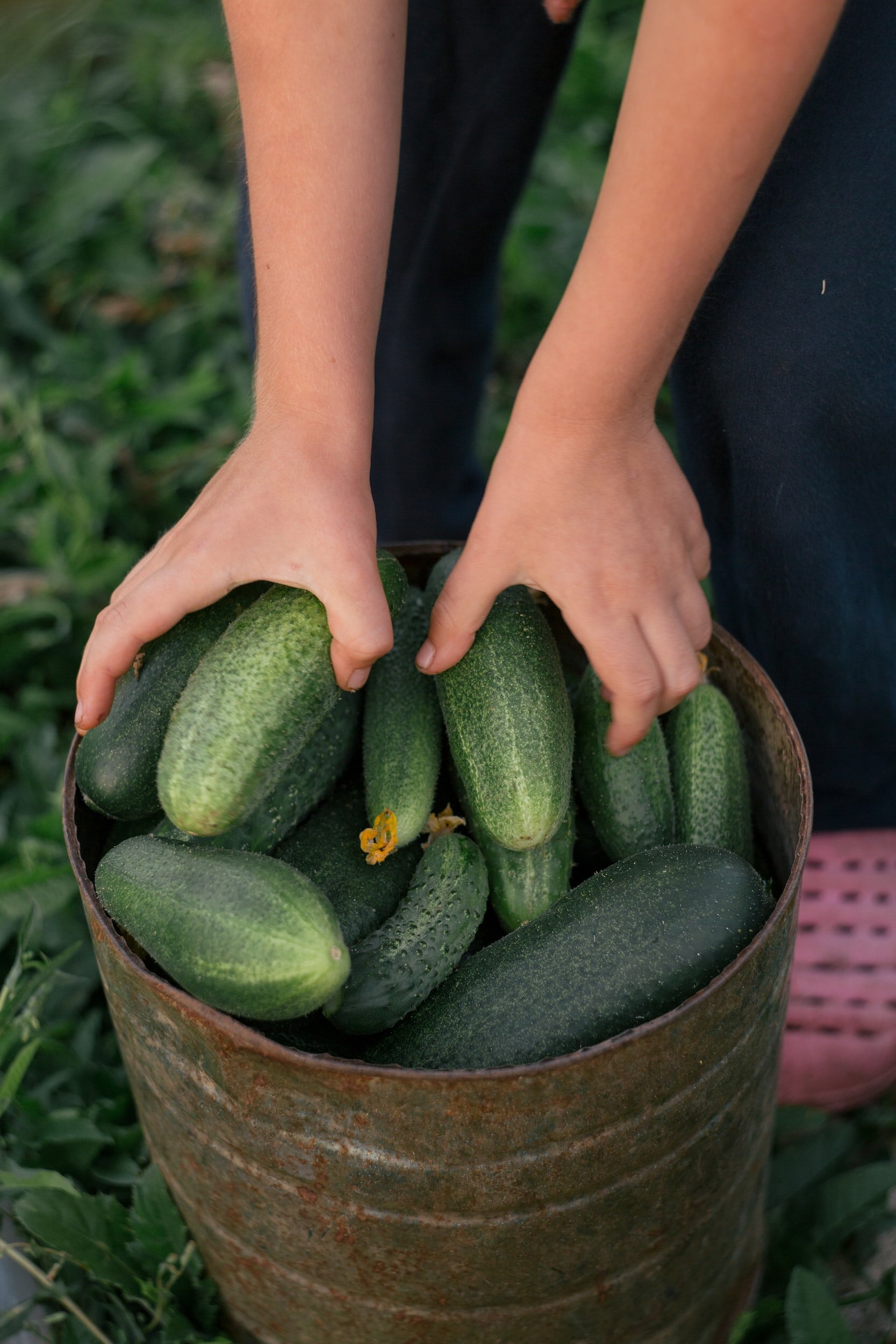Step-By-Step Tips For Growing, Harvesting, Storing, and Using Cucumbers [Guide]
Cucumbers are a popular and versatile vegetable that can be grown in home gardens. With their refreshing taste, nutritional value, and culinary versatility, growing cucumbers is a rewarding endeavor. In this comprehensive guide, we will take you through the step-by-step process of growing cucumbers, from selecting the right varieties to harvesting the fruits of your labor.
Cucumber Varieties to Grow
Cucumbers come in many types, each with its unique characteristics. Slicing cucumbers are perfect for fresh eating, while pickling cucumbers are ideal for preserving. Specialty varieties offer exciting flavors, shapes, and colors. Consider your preferences and growing conditions to select the best cucumber variety for your garden.
Slicing Cucumbers: Slicing cucumbers are the classic choice for fresh eating. Varieties like 'Marketmore' and 'Burpless' are popular options that produce long, straight fruits with a crisp texture and mild flavor. 'Marketmore' is a reliable variety known for its high yields and disease resistance. It features dark green skin and a refreshing, juicy interior. 'Burpless' cucumbers, as the name suggests, are known for being easier to digest and causing less gas. They have a smooth skin, sweet taste, and crunchy texture, making them perfect for salads, sandwiches, or snacking straight from the garden.
Pickling Cucumbers: For those interested in preserving cucumbers through pickling, 'National Pickling' and 'Boston Pickling' are excellent choices. These varieties are specifically bred for their smaller size, bumpy skin, and firm, crunchy texture, making them ideal for pickling. 'National Pickling' cucumbers are known for their uniformity and consistent shape, making them easy to fit into jars. They have a slightly tart flavor that pairs well with pickling spices. 'Boston Pickling' cucumbers, on the other hand, are slightly sweeter and have a milder taste. Both varieties offer excellent texture and crunch, resulting in delicious homemade pickles.
Specialty Cucumbers: If you're looking to add some uniqueness to your cucumber patch, consider growing specialty varieties. 'Lemon Cucumber' is a delightful option that offers round, yellow fruits resembling lemons. These cucumbers have a mild, sweet flavor with a hint of citrus and a thin, tender skin. They are perfect for slicing, snacking, or adding a pop of color to salads. 'Armenian Cucumber,' also known as 'Snake Melon' or 'Yard-Long Cucumber,' is a fascinating variety with long, ribbed fruits. Despite its name, it is actually a cucumber and not a melon. Armenian cucumbers have a mild, slightly nutty flavor and a crisp, juicy texture. They can grow up to 2 feet long but are best harvested when they are around 12 to 18 inches for optimal taste and tenderness. They are great for slicing, adding to sandwiches, or using in Mediterranean-style dishes.
Preparing the Soil
Before planting cucumbers, it's essential to prepare the soil properly to ensure optimal growth and productivity. Choose a sunny location for your cucumber patch as they thrive in full sun. Ensure the soil is well-draining and rich in organic matter. Test the soil pH and amend it if necessary to maintain a range of 6.0 to 7.0. Remove weeds and loosen the soil using a garden fork or tiller. Incorporate compost or aged manure to enhance soil fertility and moisture retention.
Planting Cucumber Seeds or Transplants
It is best to direct sow cucumber seeds in the garden. When cucumber seedlings are transplanted, their roots can be easily damaged during the process. Cucumber roots are very sensitive and can be prone to injury, which can lead to transplant shock. This shock can slow down or stunt the growth of the plant, affecting its overall health and productivity. Cucumbers are sensitive to changes in their growing environment, and transplanting can cause stress to the plant. Factors such as temperature fluctuations, exposure to sunlight, and differences in soil conditions can all contribute to transplant shock. This stress can lead to stunted growth, wilting, and an overall weakened plant.
Starting Cucumbers from Seeds: Begin seeds indoors 3-4 weeks before the last frost date. Plant them in seed trays or biodegradable pots, ensuring they receive adequate warmth and light. Transplant the seedlings to the garden once the soil has warmed up and all danger of frost has passed.
Using Transplants: If you prefer a head start, you can try to purchase healthy cucumber transplants from a reputable nursery. Transplant them into the garden when the soil temperature reaches at least 60°F (15°C).
Cucumber Plant Care
Provide Support: Cucumber vines can sprawl or climb, depending on the variety. Install trellises, stakes, or cages to support the plants, ensuring good air circulation and reducing disease risk. Cattle panel, arch trellises or string tie ups are some of the more popular methods for supporting cucumber plants.
Watering: Cucumbers have high water needs. Water consistently, aiming for about 1 inch (2.5 cm) of water per week. Avoid overwatering, as it can lead to disease issues.
Mulching: Apply a layer of organic mulch, such as straw or wood chips, to help retain soil moisture, suppress weeds, and maintain even soil temperature.
Fertilizing: Cucumbers benefit from regular feeding. Apply a balanced organic fertilizer or compost when planting and side dress with additional compost during the growing season.
Cucumber Pests and Diseases
Cucumber plants may face challenges from pests and diseases. Implement preventive measures to keep your plants healthy and productive.
Aphids: Aphids are small, sap-sucking insects that can cluster on cucumber plants, causing stunted growth, distorted leaves, and a sticky residue known as honeydew. Regularly inspect your plants for aphids and take action at the first signs of infestation. You can remove aphids by hand or spray them off with a strong jet of water. Introducing natural predators like ladybugs can also help control aphid populations.
Bean Beetles: Bean beetles, also known as Mexican bean beetles, are a common pest of cucumber plants. They feed on the leaves, leaving behind skeletonized foliage. Handpicking the beetles and their larvae can help manage their population. Applying organic insecticidal soap or neem oil can also provide control, but be sure to follow the instructions on the product label.
Spider Mites: Spider mites are tiny pests that feed on the undersides of cucumber leaves, causing yellowing, stippling, and webbing. They thrive in hot, dry conditions. Regularly spray your cucumber plants with water to create a humid environment and discourage mite infestations. Additionally, introducing predatory mites or applying insecticidal soap can help control spider mites.
Powdery Mildew: Powdery mildew is a common fungal disease that affects cucumber plants, appearing as a white, powdery coating on the leaves. It thrives in warm, humid conditions. To prevent powdery mildew, provide adequate spacing between plants to promote air circulation, water at the base of the plants to avoid wetting the foliage, and consider applying organic fungicides like sulfur or copper-based sprays as a preventive measure.
Bacterial Blight: Bacterial blight is a bacterial disease that causes dark, water-soaked lesions on cucumber leaves and fruits. To prevent the spread of bacterial blight, practice good garden sanitation by removing and disposing of infected plant material. Avoid overhead watering, as the disease spreads through water droplets. Crop rotation and choosing resistant cucumber varieties can also help minimize the risk of bacterial blight.
Mosaic Viruses: Cucumbers can be susceptible to mosaic viruses, which cause mosaic-like patterns on the leaves, stunted growth, and reduced yields. These viruses are usually transmitted through pests like aphids or through contaminated tools. To prevent mosaic viruses, employ good pest management practices to reduce aphid populations. Remove and destroy infected plants promptly to prevent the spread of the virus.
Pruning and Training Cucumber Vines
Pruning cucumber vines can benefit plant health and fruit production. For vining cucumbers, pinch off lateral shoots that emerge from leaf axils to focus the plant's energy on fruit development. Some cucumber varieties benefit from pinching the main vine when it reaches the desired height or length. This encourages lateral growth and may result in more fruit production.
Harvesting Cucumbers
Harvest cucumbers when they reach the desired size, typically 6-8 inches (15-20 cm) for slicing cucumbers and smaller for pickling varieties. Look for firm, well-colored fruits without yellowing. Use clean scissors or shears to cut the cucumbers from the vine, leaving a small portion of the stem attached. Harvest cucumbers regularly to encourage continuous fruit production. Overripe cucumbers can become bitter and reduce plant productivity.
Storing Cucumbers
Store harvested cucumbers on the door of your refrigerator (the warmest part of your fridge) wrapped in a cloth inside of a plastic bag to absorb excess moisture. Cucumbers may last up to two weeks stored this way. Remember to store cucumbers away from other fruits and vegetables that produce ethylene gas, such as tomatoes and melons. Ethylene can accelerate the ripening process and cause the cucumbers to spoil more quickly.
Growing cucumbers in your home garden is a rewarding experience. By following the steps outlined in this comprehensive guide, you'll be well-equipped to grow healthy cucumber plants, enjoy a bountiful harvest, and savor the fresh, crisp taste of homegrown cucumbers. Happy cucumber gardening!




